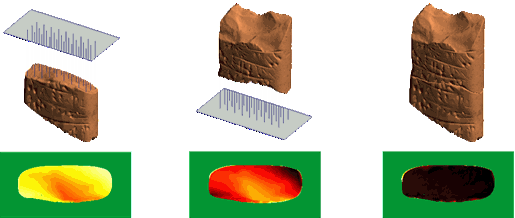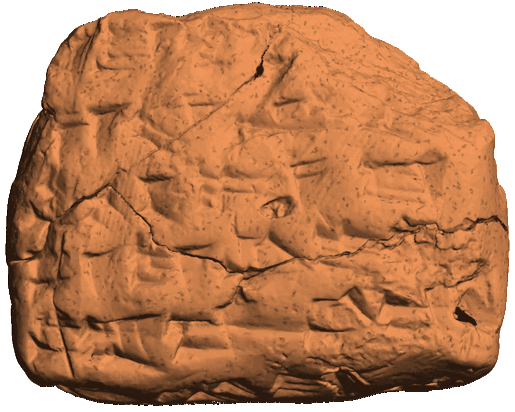Automated Reconstruction of Cuneiform Tablets
An important ambition of the Virtual Cuneiform Tablet Reconstruction Project has been the automated reconstruction of cuneiform tablets from virtual fragments. This virtual reconstruction requires distance calculations between potentially joining surfaces as shown in figure 1. The first successful automatic joins of virtual fragments of cuneiform tablets (from both Uruk and Ur) were achieved using a novel matching method. Figure 2 shows two virtually joined cuneiform fragments from Uruk.
The joining algorithm works by iteratively finding the best orientation of the two candidate fragments in three-dimensional space. A “cost function” assesses the fit of fragments using the distances between pairs of points evenly distributed across the joining surfaces. These distances are calculated using hardware acceleration provided by Graphical Processing Units (GPUs). This speeds up what would otherwise be a very long series of computations to optimise the joining of fragment pairs consisting of tens of thousands of vertices. The matching algorithm is described in detail in our publications. Figure 3 shows a video animation of the algorithm's progress in the successful virtual reconstruction of the Atrahasis 'C' tablet, whose physical fragments remained separated by 1000 km.

